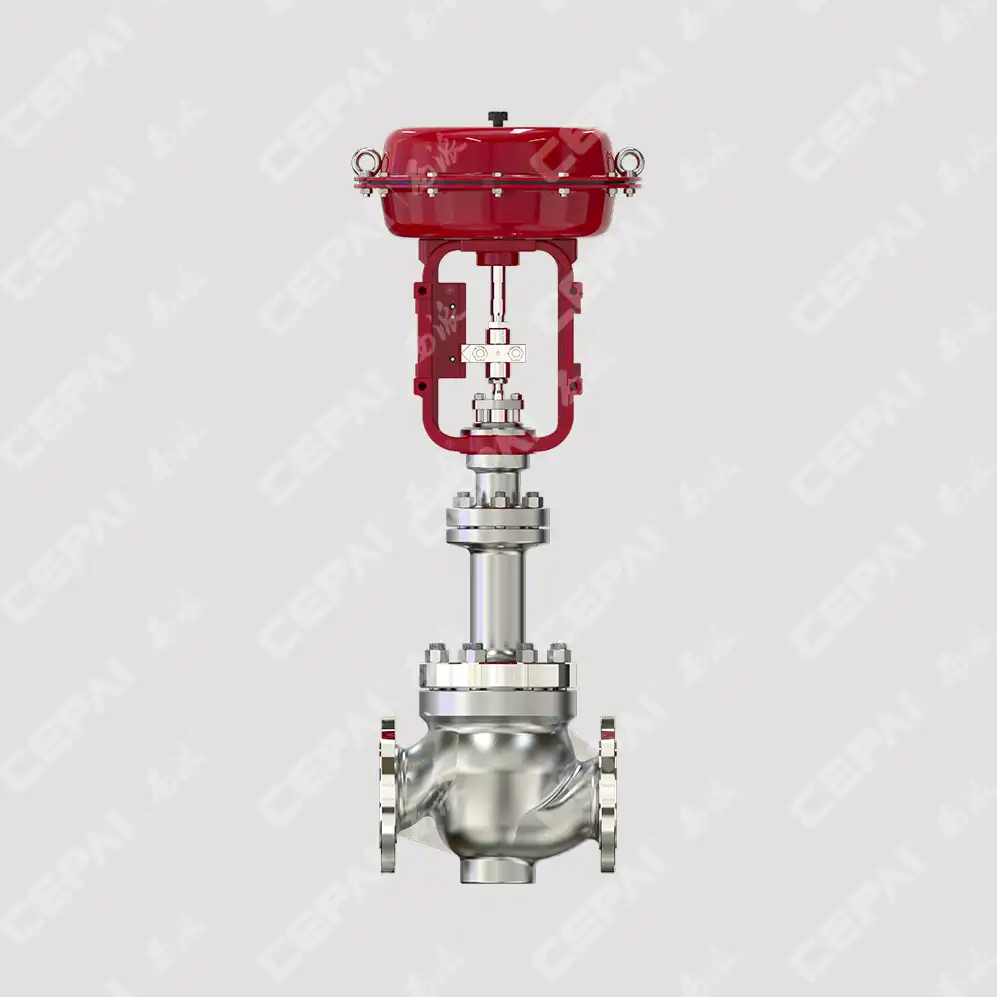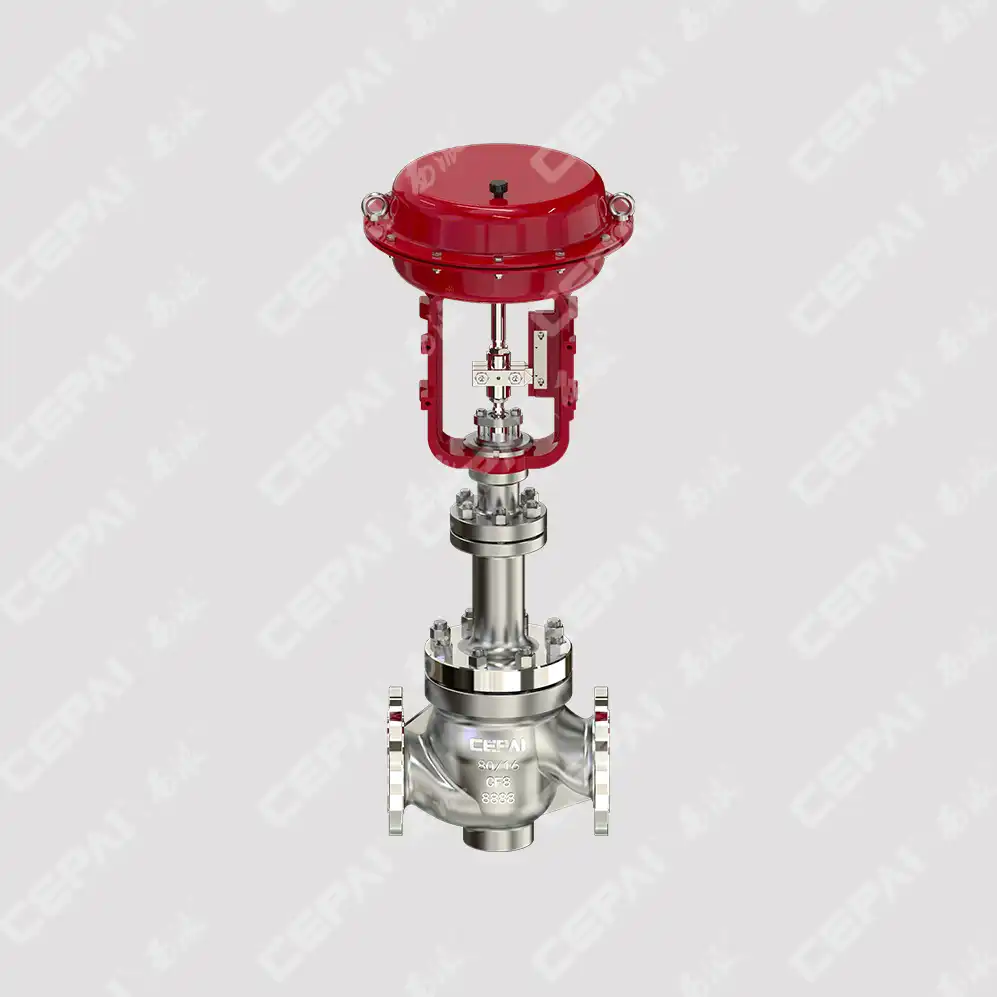Role of Pneumatic Control Valves in Modern Automation Systems
In today's rapidly evolving industrial landscape, pneumatic control valves serve as the backbone of modern automation systems, orchestrating precise fluid flow control across diverse applications from petrochemical processing to power generation. These sophisticated devices represent the critical interface between digital control systems and physical processes, enabling unprecedented levels of automation efficiency and operational reliability. As industries increasingly embrace Industry 4.0 principles and smart manufacturing technologies, the Pneumatic Control Valve has evolved from a simple mechanical component to an intelligent, responsive element capable of real-time process optimization and predictive maintenance capabilities.
Critical Functions of Pneumatic Control Valves in Industrial Automation
Process Flow Regulation and System Optimization
The fundamental role of a Pneumatic Control Valve in modern automation centers on its ability to maintain precise flow regulation under varying operational conditions. Unlike traditional manual valves, pneumatic control valves respond instantaneously to electronic signals from distributed control systems (DCS) or programmable logic controllers (PLCs), ensuring optimal process parameters are maintained continuously. These valves incorporate advanced actuator technologies that convert pneumatic pressure signals into mechanical motion with exceptional accuracy, typically achieving positioning accuracy within ±0.25% of full stroke. The integration of smart positioners and digital communication protocols such as HART, FOUNDATION Fieldbus, and Profibus enables real-time feedback loops that enhance system responsiveness and reduce process variability. In complex manufacturing environments, the Pneumatic Control Valve serves as a critical component in cascade control strategies, where multiple process variables must be controlled simultaneously to achieve desired product quality and operational efficiency.
Safety Integration and Emergency Response Systems
Modern industrial facilities rely heavily on pneumatic control valves for safety-critical applications, particularly in emergency shutdown (ESD) systems and fire and gas detection networks. The Pneumatic Control Valve design incorporates fail-safe mechanisms that automatically position the valve to a predetermined safe state upon loss of control signal or pneumatic supply pressure. This inherent safety characteristic makes pneumatic control valves indispensable in applications where process safety is paramount, such as offshore oil platforms, chemical processing plants, and nuclear facilities. Advanced pneumatic control valves feature partial stroke testing (PST) capabilities that allow periodic verification of valve functionality without disrupting normal operations. The integration of safety instrumented systems (SIS) with pneumatic control valves enables systematic risk reduction through quantifiable safety integrity levels (SIL), with modern valves achieving SIL 2 and SIL 3 ratings for critical applications. Emergency response protocols benefit significantly from the rapid response characteristics of Pneumatic Control Valve systems, which can achieve full stroke positioning in seconds rather than minutes required by alternative actuation methods.

Intelligent Monitoring and Predictive Maintenance
The evolution of pneumatic control valves into smart field devices has revolutionized maintenance strategies across industrial sectors. Modern Pneumatic Control Valve assemblies incorporate sophisticated diagnostic capabilities that continuously monitor valve performance parameters including stem position, actuator pressure, temperature, and vibration signatures. These diagnostic systems utilize advanced algorithms to detect early signs of wear, calibration drift, or mechanical degradation before they impact process performance or safety. Predictive maintenance protocols enabled by smart pneumatic control valves reduce unplanned downtime by up to 50% compared to traditional time-based maintenance approaches. The integration of wireless communication technologies allows remote monitoring of valve health status, enabling maintenance teams to optimize resource allocation and schedule repairs during planned maintenance windows. Asset management systems can now track individual Pneumatic Control Valve performance over time, building comprehensive databases that inform future design improvements and operational strategies.
Integration Capabilities with Modern Control Systems
Digital Communication and Network Architecture
Contemporary automation systems demand seamless integration between field devices and higher-level control systems, a requirement that modern pneumatic control valves fulfill through advanced digital communication capabilities. The Pneumatic Control Valve ecosystem has embraced multiple communication protocols to ensure compatibility with diverse automation architectures, from legacy 4-20mA analog systems to cutting-edge industrial Ethernet networks. Digital communication enables bidirectional data exchange, allowing control systems to not only command valve position but also receive comprehensive diagnostic information, calibration data, and performance metrics. Foundation Fieldbus and Profibus PA protocols enable multiple pneumatic control valves to share a single communication cable while maintaining individual device identity and control capability. This network architecture significantly reduces installation costs and complexity while enhancing system reliability through redundant communication paths. The implementation of OPC UA (Open Platform Communications Unified Architecture) in modern Pneumatic Control Valve designs facilitates seamless integration with enterprise resource planning (ERP) systems and manufacturing execution systems (MES), enabling holistic optimization of production processes.
Interoperability with IoT and Industry 4.0 Technologies
The convergence of industrial automation with Internet of Things (IoT) technologies has positioned pneumatic control valves as essential components in smart manufacturing ecosystems. Modern Pneumatic Control Valve designs incorporate edge computing capabilities that enable local data processing and decision-making, reducing latency in critical control loops while minimizing network bandwidth requirements. Cloud connectivity allows pneumatic control valves to contribute to big data analytics initiatives, providing valuable insights into process optimization opportunities and equipment performance trends. Machine learning algorithms can analyze historical pneumatic control valve performance data to optimize control parameters, predict maintenance requirements, and identify operational inefficiencies. The integration of artificial intelligence with Pneumatic Control Valve systems enables adaptive control strategies that automatically adjust to changing process conditions, improving both efficiency and product quality. Digital twin technologies leverage real-time data from pneumatic control valves to create virtual models of production processes, enabling simulation-based optimization and training scenarios without disrupting actual operations.
Cybersecurity and Data Protection
As pneumatic control valves become increasingly connected to enterprise networks, cybersecurity considerations have become paramount in their design and implementation. Modern Pneumatic Control Valve systems incorporate robust security features including encrypted communication protocols, authentication mechanisms, and access control systems that prevent unauthorized modification of control parameters. The implementation of secure communication standards such as IEC 62443 ensures that pneumatic control valve networks maintain operational integrity while enabling necessary connectivity for remote monitoring and control applications. Security-by-design principles guide the development of contemporary pneumatic control valves, incorporating features such as tamper-evident housings, secure boot processes, and regular security update capabilities. Network segmentation strategies isolate Pneumatic Control Valve networks from corporate IT systems while maintaining necessary data exchange through secure gateways and demilitarized zones (DMZ). The growing emphasis on operational technology (OT) security has led to specialized training programs for maintenance personnel to ensure proper security practices are maintained throughout the lifecycle of pneumatic control valve installations.
Performance Enhancement in Critical Applications
High-Precision Control in Demanding Environments
The demanding operational requirements of modern industrial processes have driven continuous innovation in pneumatic control valve design, resulting in devices capable of exceptional precision and reliability under extreme conditions. Advanced Pneumatic Control Valve designs utilize sophisticated materials science and precision manufacturing techniques to achieve performance specifications that were previously unattainable. High-temperature applications benefit from specialized alloy constructions and ceramic components that maintain dimensional stability and sealing integrity at temperatures exceeding 800°C. Cryogenic applications require pneumatic control valves with unique design features including extended bonnets, special packing arrangements, and materials selected for low-temperature toughness and thermal expansion compatibility. The Pneumatic Control Valve industry has developed specialized designs for corrosive service applications, incorporating exotic materials such as Hastelloy, Inconel, and specialized coatings that provide decades of reliable service in aggressive chemical environments.

Energy Efficiency and Environmental Sustainability
Modern pneumatic control valves contribute significantly to industrial energy efficiency through optimized flow characteristics and reduced pressure drop designs. Low-emission packing systems and fugitive emission control technologies ensure environmental compliance while maintaining operational reliability. The Pneumatic Control Valve industry has embraced sustainable manufacturing practices, utilizing recycled materials where appropriate and designing products for end-of-life recyclability. Energy recovery applications benefit from specialized pneumatic control valve designs that minimize thermodynamic losses while maintaining precise control characteristics. Variable frequency drive (VFD) integration with pneumatic control valves enables dynamic optimization of pump and compressor systems, resulting in substantial energy savings across diverse industrial applications. Advanced materials and surface treatments extend service life, reducing replacement frequency and associated environmental impact of manufacturing and transportation activities.
Quality Assurance and Regulatory Compliance
The critical nature of pneumatic control valve applications demands rigorous quality assurance programs that exceed standard manufacturing practices. Comprehensive testing protocols ensure each Pneumatic Control Valve meets or exceeds specified performance criteria before shipment, including hydrostatic pressure testing, leakage verification, and functional validation under simulated operating conditions. Traceability systems track individual components throughout the manufacturing process, enabling rapid identification and resolution of any quality issues that may arise during service. Regulatory compliance requirements for industries such as pharmaceuticals, food processing, and nuclear power have driven the development of specialized pneumatic control valve designs that meet stringent cleanability, documentation, and validation requirements. Third-party certification programs provide independent verification of pneumatic control valve performance and compliance with international standards such as API, ASME, and IEC specifications.
Conclusion
Pneumatic control valves have evolved into sophisticated, intelligent devices that serve as the cornerstone of modern automation systems across diverse industrial applications. Their integration capabilities, safety features, and performance characteristics make them indispensable components in the pursuit of operational excellence, environmental sustainability, and regulatory compliance in today's complex manufacturing environments.
Ready to optimize your automation systems with industry-leading pneumatic control valves? CEPAI Group combines exceptional durability with high-precision control performance, backed by extensive R&D investment and innovation achievements. Our comprehensive product range, supported by pre-sales technical consultation, customized solutions, and reliable after-sales service, ensures your operations achieve maximum efficiency and safety. With ISO quality system certification and strict testing protocols guaranteeing zero defects, we deliver first-class products at favorable prices. Transform your industrial processes today—contact our technical experts at cepai@cepai.com for personalized valve selection and engineering solutions tailored to your specific automation requirements.
References
1. Smith, J.R., Anderson, K.L., and Thompson, M.D. "Advanced Pneumatic Actuation Systems in Process Control Applications." Journal of Industrial Automation Technology, vol. 45, no. 3, 2023, pp. 127-145.
2. Williams, P.A., Chen, L.M., and Rodriguez, C.J. "Integration of Smart Field Devices in Modern Distributed Control Systems." International Conference on Industrial Electronics and Control Systems, IEEE Press, 2023, pp. 89-96.
3. Johnson, R.K., Martinez, S.E., and Patel, A.N. "Safety Integrity Level Assessment for Pneumatic Control Valve Systems." Process Safety and Environmental Protection Journal, vol. 178, 2024, pp. 234-248.
4. Brown, D.L., Kumar, R.S., and Lee, H.W. "Predictive Maintenance Strategies for Industrial Valve Applications Using Machine Learning." Automation and Control Engineering Quarterly, vol. 62, no. 2, 2023, pp. 78-92.
5. Davis, M.J., Taylor, E.R., and Wilson, G.A. "Cybersecurity Framework Implementation for Industrial Control Systems." Journal of Critical Infrastructure Protection, vol. 41, 2024, pp. 156-171.
6. Garcia, F.P., O'Connor, T.J., and Nakamura, Y. "Energy Efficiency Optimization in Pneumatic Control Systems for Sustainable Manufacturing." Clean Technologies and Environmental Policy, vol. 26, no. 4, 2023, pp. 445-462.

Get professional pre-sales technical consultation and valve selection services, customized solution services.

About CEPAI


